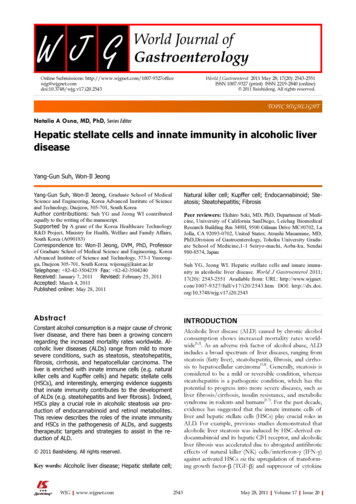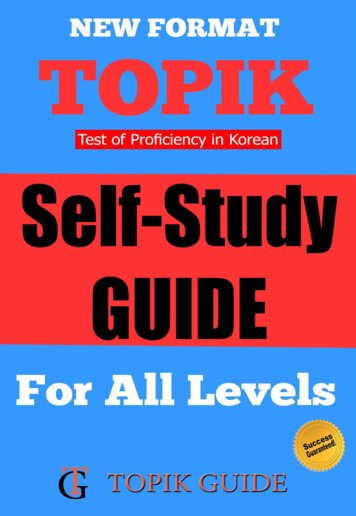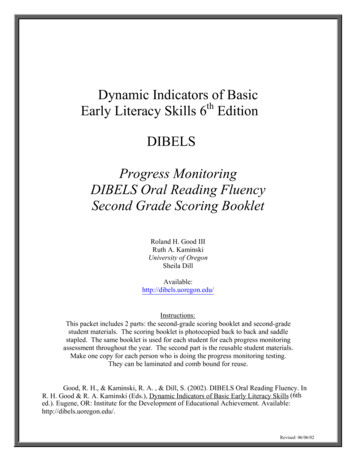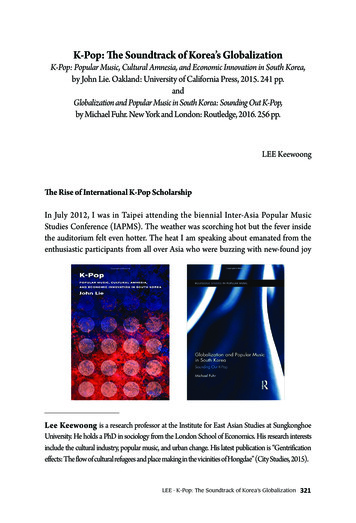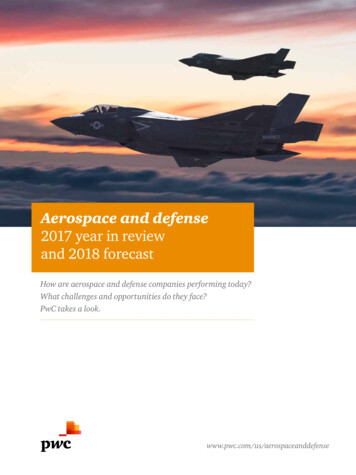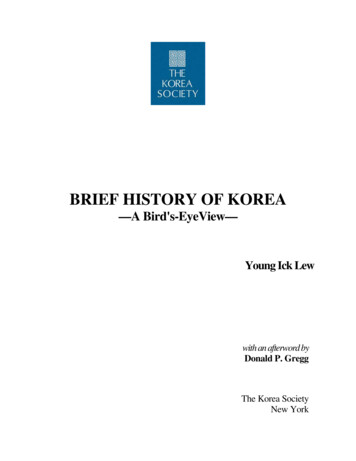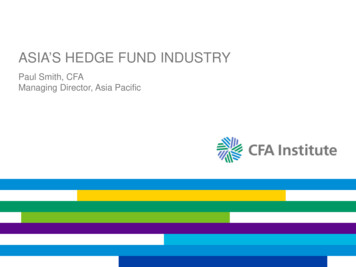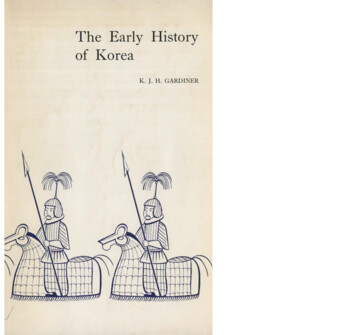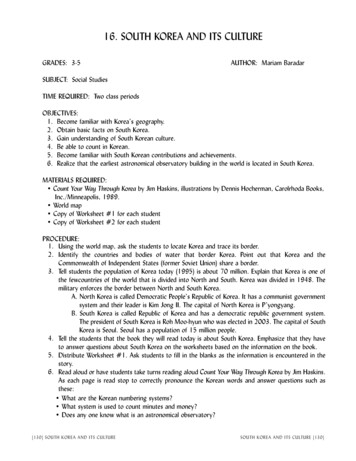
Transcription
16. SOUTH KOREA AND ITS CULTUREGRADES: 3-5AUTHOR: Mariam BaradarSUBJECT: Social StudiesTIME REQUIRED: Two class periodsOBJECTIVES:1. Become familiar with Korea’s geography.2. Obtain basic facts on South Korea.3. Gain understanding of South Korean culture.4. Be able to count in Korean.5. Become familiar with South Korean contributions and achievements.6. Realize that the earliest astronomical observatory building in the world is located in South Korea.MATERIALS REQUIRED: Count Your Way Through Korea by Jim Haskins, illustrations by Dennis Hocherman, Carolrhoda Books,Inc./Minneapolis, 1989. World map Copy of Worksheet #1 for each student Copy of Worksheet #2 for each studentPROCEDURE:1. Using the world map, ask the students to locate Korea and trace its border.2. Identify the countries and bodies of water that border Korea. Point out that Korea and theCommonwealth of Independent States (former Soviet Union) share a border.3. Tell students the population of Korea today (1995) is about 70 million. Explain that Korea is one ofthe fewcountries of the world that is divided into North and South. Korea was divided in 1948. Themilitary enforces the border between North and South Korea.A. North Korea is called Democratic People’s Republic of Korea. It has a communist governmentsystem and their leader is Kim Jong II. The capital of North Korea is P’yongyang.B. South Korea is called Republic of Korea and has a democratic republic government system.The president of South Korea is Roh Moo-hyun who was elected in 2003. The capital of SouthKorea is Seoul. Seoul has a population of 15 million people.4. Tell the students that the book they will read today is about South Korea. Emphasize that they haveto answer questions about South Korea on the worksheets based on the information on the book.5. Distribute Worksheet #1. Ask students to fill in the blanks as the information is encountered in thestory.6. Read aloud or have students take turns reading aloud Count Your Way Through Korea by Jim Haskins.As each page is read stop to correctly pronounce the Korean words and answer questions such asthese: What are the Korean numbering systems? What system is used to count minutes and money? Does any one know what is an astronomical observatory?[130] SOUTH KOREA AND ITS CULTURESOUTH KOREA AND ITS CULTURE [130]
Where is the oldest astronomical observatory located? What is the name of the oldest stone astronomical observatory in South Korea? Why do you think Ch’omsong-dae has 365 Stones? How old is Ch’omsong-dae Observatory? What is the boundary of South Korea to the West, East, North, South? What is the boundary of North Korea to the North? What is the population of Korea? South Korea? North Korea?7. To reinforce the information gained from the book, distribute Worksheet #2. Ask the students to findand draw a circle around the words that they filled in on Worksheet #1. Go over the worksheets withthe class and discuss it as a group.8. Divide the class into small groups to conduct research in the school library to identify the names ofindividuals who won the six gold medals at the 1984 Summer Olympic Games and prepare a shortbiographical report. Have each group share its report with the class.EVALUATION:The students should complete Worksheet #1 and #2 with 90% accuracy.ENRICHMENT: Ask the students individually or in a small groups (3-4 students) to conduct research in the library andprepare a one-page report on Korea. Topics could be: Korean flag, language, economy, and monetaryunit, culture, family structure, tea ceremony.etc. Encourage them to be creative with their class presentation. Ask them to share their report with the class. Follow with class discussion. Invite a Korean student/parent/community member to make a presentation regarding his/her culture,educational system, family structure, or any other topic to the class. To challenge talented and gifted students, have them do a contrast and comparison of the following:1) physical attributes of South Korea and the state in which they reside, or 2) the economy/literacyrate of South Korea and other countries. The following list is an example and it could be extended orchanged to fit any classroom activity. (After students complete the information, ask them to locatethese countries on the map of the world and identify what continent on which they are located.)[131] SOUTH KOREA AND ITS CULTURESOUTH KOREA AND ITS CULTURE [131]
LITERACY RATEMONETARY UNITLANGUAGEKOREAJAPANCHINASAUDI SRI LANKATAJIKISTANAnswers to Worksheet #1:1. Seoul2. han’gul3. seesaw4. olympic5. Changgi6. baseball7. South Korea8. 109. Ch’omsong-dae10. Pagoda11. Popchu-sa12. gold medals13. spicy14. Sino-Korean[132] SOUTH KOREA AND ITS CULTURESOUTH KOREA AND ITS CULTURE [132]
WORKSHEET # 1Directions: fill in the blanks based on the information from the book Count Your Way Through Korea byJim Haskins.1. The capital of South Korea is .2. is the official language of South Korea.3. is a Korean game.4. The 1988 Summer Games were held in Seoul.5. Korean kind of chess game is called .6. is almost as popular in South Korea as it is in the United States. Soccerand baseball are the most popular sports in South Korea today.7. In 1982, won the 27th World Baseball Championship which happened tobe played in Seoul.8. There are vowels in the Korean alphabet.9. The oldest existing astronomical observatory of the world is and it islocated in South Korea.10. The of Popchu-sa has five stories.11. Temple was built in A.D. 553. It is thought to be the oldest woodenPagoda in Korea.12. South Koreans won six at the 1984 Summer Olympic Games in LosAngeles.13. Korean food has a very taste.14. Koreans use two different kinds of numbering systems. One is calledthat is influenced by Chinese and is used to count minutes and money. The other is Korean numbers that are used to count persons and things.[133] SOUTH KOREA AND ITS CULTURESOUTH KOREA AND ITS CULTURE [133]
WORKSHEET #2Directions: Find each of the words that you filled in on Worksheet #1. Draw a circle around each word.You may find them in horizontal, vertical or other directions.[134] SOUTH KOREA AND ITS CULTURESOUTH KOREA AND ITS CULTURE [134]
ANSWER SHEET #2[135] SOUTH KOREA AND ITS CULTURESOUTH KOREA AND ITS CULTURE [135]
INFORMATION SHEET #1CH’OMSONG-DAEAccording to the 1982 Guinness Book of World Records: “The earliest astronomical observatorybuilding in the world is the Ch’omsong-dae observatory in Kyongju, South Korea.” Recordsindicated observatory was constructed between 633 and 647 A.D.Ch’omsong-dae is a bottle-shaped granite tower. It is a cylinder, of which the upper circle and the lowercircle are different in diameter, on a square stone base. On the top, long square stones are crossed makinga # shape. At the 12th layer, there is a square window, facing due south, which measures about 1 metersquare. The total number of stones from the ground to the 27th layer is 365. Ch’omsong-dae is 9.108mhigh (29 feet) with a diameter of 4.93m at the base and 2.85m at the top. The square window is at aheight of 4.16m from the stone base.The purpose of the tower was to predict events on earth by observing the celestial phenomena and to studythe meteorological phenomena for application to farming.Ch’omsong-dae may well have been a multipurpose observatory, measuring the sun’s shadow, much in theway of a gnomon, and determining the positions of constellations for exact measurement of the celestial andequinoctial points as well as the 24 fortnightly period. The number of stones in each layer was consideredto symbolize the 24 fortnightly periods of a year.Ch’omsong-dae was presumed from its peculiar shape to have been built in accordance with the yin-yangtheory (um-yang theory in Korean) representing the round-heaven and square-earth.[136] SOUTH KOREA AND ITS CULTURESOUTH KOREA AND ITS CULTURE [136]
INFORMATION SHEET #2Additional Information on South KoreaThe population of Korea is about 76 million people: 48 million in South Korea, 18 million in North Korea,and 10 million abroad in China and Japan.South Korea is the most Christian nation in Asia. South Korea has the world’s largest churches of manydifferent denominations, i.e., Methodist Kwanglim Church and Full Gospel Church in Youido, Seoul, Korea.Han’gul is the official written language of South Korea. Education is the most important topic discussed inKorea. The literacy rate of South Korea is 98 percent. Only elementary education is compulsory and free(K-6). At middle school level (7-9) and high school level (10-12) tuition has to be paid by everyone exceptthose who live in remote farm and fishing villages. All high school students who graduate have to take anational entrance exam to enter universities. Korean Language, Literature, English, Math are the requiredsubjects for the university entrance exams. Some universities have additional entrance exams. In 1996 someuniversities will require article-writing instead of taking the additional test. The competition to enter theprestigious universities is keen and fierce which greatly affects the lives of high school students and theirparents.The monetary unit of South Korea is the Won (currently one U.S. dollar equals about 930 won). SouthKorea has a strong economy. According to the World Bank, the distribution of income in South Korea iscomparatively one of the best in the world. South Korea has a high level of employment, the unemploymentrate is only 2%. Through high employment, South Korea has been able to push up the standard of livingand maintain stable prices. Korea is 11th among 150 countries in the world in terms of trade and export(in 2005). Manufacturing is the most important industry. South Korea exports electronics, iron (PohangSteel Company is the second largest steel company in the world), automobiles, and industrial machinery tothe United States of America, Japan, European countries, and neighboring countries in Asia.The following are world rankings for South Korea in terms of exporting:Shipbuilding.#1Semi Conductor.#2Automobile.#6[137] SOUTH KOREA AND ITS CULTURESOUTH KOREA AND ITS CULTURE [137]
[138] SOUTH KOREA AND ITS CULTURESOUTH KOREA AND ITS CULTURE [138]
[139] SOUTH KOREA AND ITS CULTURESOUTH KOREA AND ITS CULTURE [139]
[140] SOUTH KOREA AND ITS CULTURESOUTH KOREA AND ITS CULTURE [140]
[141] SOUTH KOREA AND ITS CULTURESOUTH KOREA AND ITS CULTURE [141]
[142] SOUTH KOREA AND ITS CULTURESOUTH KOREA AND ITS CULTURE [142]
[143] SOUTH KOREA AND ITS CULTURESOUTH KOREA AND ITS CULTURE [143]
[144] SOUTH KOREA AND ITS CULTURESOUTH KOREA AND ITS CULTURE [144]
[145] SOUTH KOREA AND ITS CULTURESOUTH KOREA AND ITS CULTURE [145]
[146] SOUTH KOREA AND ITS CULTURESOUTH KOREA AND ITS CULTURE [146]
[147] SOUTH KOREA AND ITS CULTURESOUTH KOREA AND ITS CULTURE [147]
East SeaYellow Sea[148] SOUTH KOREA AND ITS CULTURESouthKoreaSOUTH KOREA AND ITS CULTURE [148]
[149] SOUTH KOREA AND ITS CULTURESOUTH KOREA AND ITS CULTURE [149]
[150] SOUTH KOREA AND ITS CULTURESOUTH KOREA AND ITS CULTURE [150]
[151] SOUTH KOREA AND ITS CULTURESOUTH KOREA AND ITS CULTURE [151]
[152] SOUTH KOREA AND ITS CULTURESOUTH KOREA AND ITS CULTURE [152]
[153] SOUTH KOREA AND ITS CULTURESOUTH KOREA AND ITS CULTURE [153]
[154] SOUTH KOREA AND ITS CULTURESOUTH KOREA AND ITS CULTURE [154]
[155] SOUTH KOREA AND ITS CULTURESOUTH KOREA AND ITS CULTURE [155]
[156] SOUTH KOREA AND ITS CULTURESOUTH KOREA AND ITS CULTURE [156]
[157] SOUTH KOREA AND ITS CULTURESOUTH KOREA AND ITS CULTURE [157]
[158] SOUTH KOREA AND ITS CULTURESOUTH KOREA AND ITS CULTURE [158]
[159] SOUTH KOREA AND ITS CULTURESOUTH KOREA AND ITS CULTURE [159]
[160] SOUTH KOREA AND ITS CULTURESOUTH KOREA AND ITS CULTURE [160]
[161] SOUTH KOREA AND ITS CULTURESOUTH KOREA AND ITS CULTURE [161]
[162] SOUTH KOREA AND ITS CULTURESOUTH KOREA AND ITS CULTURE [162]
[163] SOUTH KOREA AND ITS CULTURESOUTH KOREA AND ITS CULTURE [163]
[164] SOUTH KOREA AND ITS CULTURESOUTH KOREA AND ITS CULTURE [164]
[165] SOUTH KOREA AND ITS CULTURESOUTH KOREA AND ITS CULTURE [165]
4. Be able to count in Korean. 5. Become familiar with South Korean contributions and achievements. 6. Realize that the earliest astronomical observatory building in the world is located in South Korea. MATERIALS REQUIRED: Count Your Way Through Korea by Jim Haskins, illustrations by Dennis Hocherman, C

